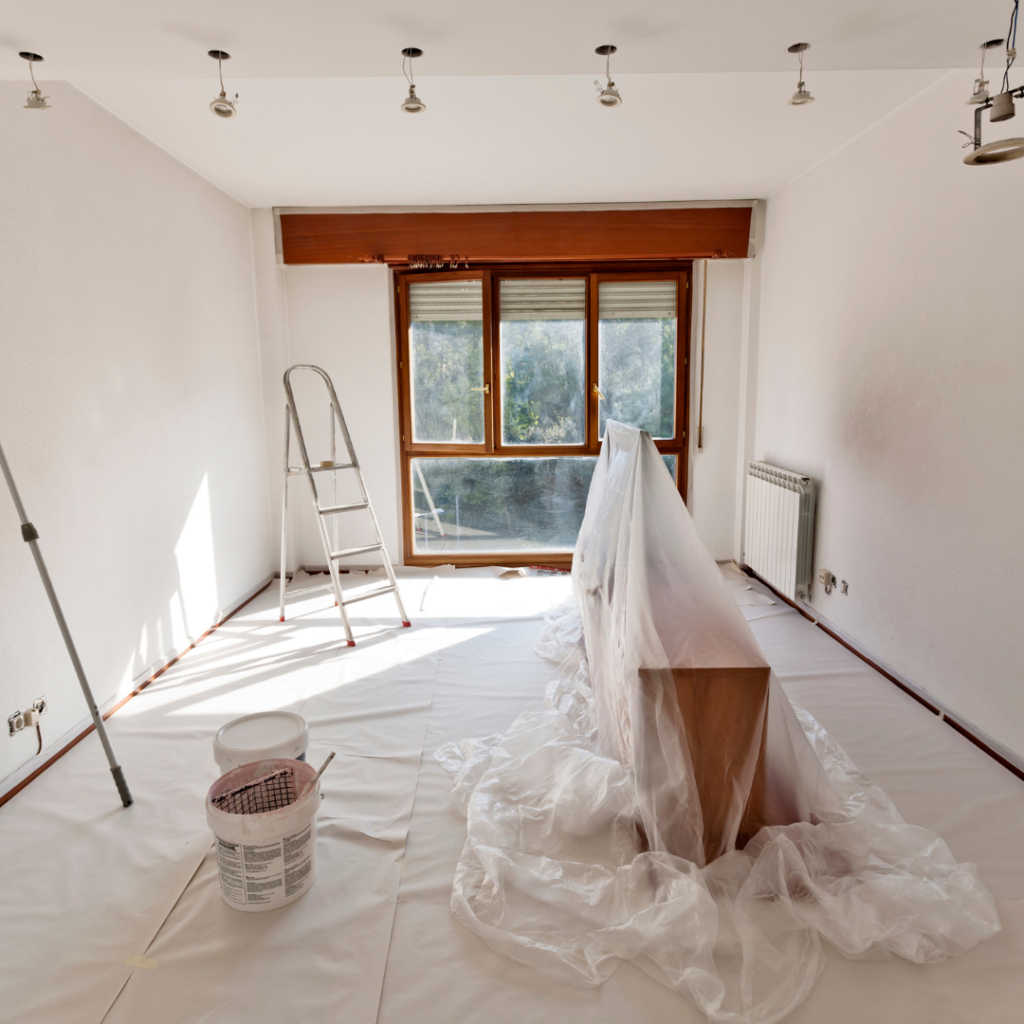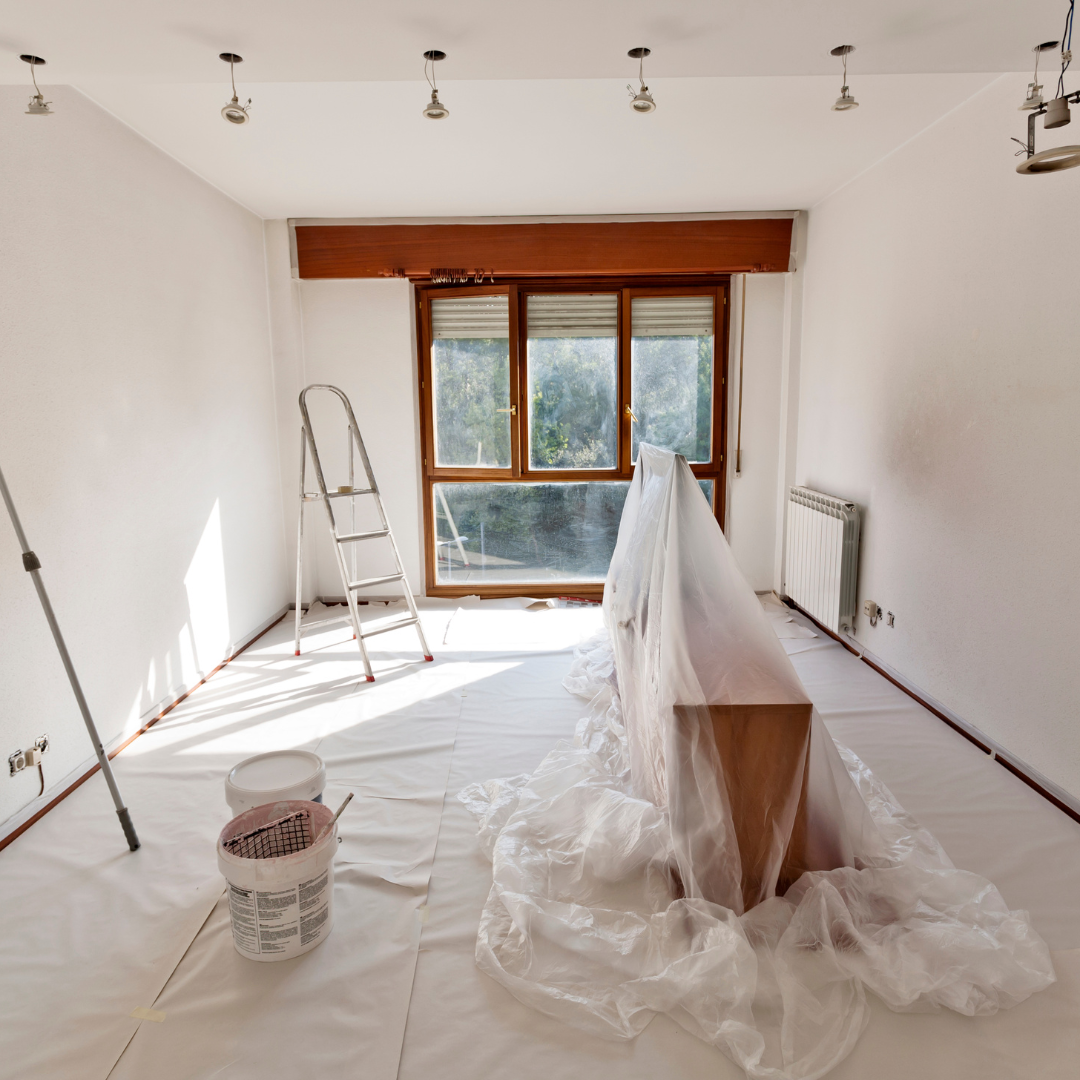The art of painting a church or chapel: Painting a church or chapel requires careful planning and execution. Unlike painting a home, there are unique challenges and considerations when painting a place of worship. How a church is painted can significantly impact the overall aesthetic and atmosphere of the space. In light of this, many factors are critical to ensure a distinctive paint finish.
For instance, the colors, accents, and artistic details communicate something about the congregation’s personality. For that reason, choosing the right hues, finishes, and decorative elements is an integral part of the process.
At the same time, painting a church is no small undertaking. Vaulted ceilings, intricate architectural details, and large surface areas make church painting more complex than residential projects. Despite all this, proper techniques and best practices can smooth this process.
In this article, you will learn how to paint a church to achieve the desired result.

How To Achieve A Perfect Painting Process For A Church
Put in place adequate preparation.
Thorough preparation is arguably the most vital aspect of painting a church. It sets the stage for how the final painted surface will look and perform over time.
The first step is assessing the existing surfaces. Note any previous paint, plaster, wood finishes, and problem areas. Check for cracks, peeling, moisture damage, or other issues that must be remedied before painting. Look for mold or mildew growth signs, which must be treated and removed before painting.
Next, prepare walls and ceilings by cleaning, sanding, patching holes, removing loose paint, caulking gaps, and priming. Creating an even, uniform surface will allow the new paint to adhere correctly. A trisodium phosphate (TSP) solution helps remove grease, grime, and chalking paint on old surfaces. Rinse thoroughly after cleaning.
Protecting floors, furnishings, windows, and surfaces from being painted is also essential. Use drop cloths, masking tape, and plastic sheeting to prevent paint splatters and overspray. Also, take the time to cover up stained glass windows, woodwork, altars, and other ornate details to their beauty.
The art of painting a church or chapel: Choose the Right Paint
The choice of paint matters in the place of worship. So, when selecting paint for a church or chapel, there are several factors to consider:
- Sheen – Flat, eggshell, and satin finishes are common for walls and ceilings. Semi-gloss is often used for trim and architectural details. Matte finishes hide imperfections well.
- Quality – Because of the size and visibility of the space, high-quality, commercial-grade paint is best. Check for durability, scrub ability, and fade resistance.
- Match existing – In most cases, the new paint should blend with existing colors. Custom-matching the current hues creates a cohesive look.
- Specialty finishes – Certain surfaces like stained glass, ornamental wood, or metal may require primers and paints explicitly designed for those materials.
- Volume – Calculate the square footage to determine the needed paint. This is important as having enough avoids a color mismatch if more paint must be purchased mid-project.
In the final analysis, you can work with the congregation to determine the suitable paint types, colors, and finishes to align with their vision for the space.
Application Methods
Applying the paint properly is what transforms the painting plan into reality. So, for the best result when painting a church or chapel, use these techniques:
- Angled sash brushes are ideal for cutting edges and painting detailed areas. Their tapered shape provides control. High-quality nylon or polyester bristle brushes make smooth strokes.
- Rollers in 3/4″ or 1 1/4″ nap smoothly cover large wall and ceiling sections. Extendable poles allow access to high areas. Choose a high-density short nap for a smooth finish.
- Meticulously tape off walls, moldings, windows, and trim with painter’s tape before rolling. This prevents drips and bleeding. Remove the tape immediately after painting before the paint dries.
- Always work top to bottom when painting a wall. Ceilings first, then walls from top corner to bottom corner. This avoids drips marring freshly painted areas.
- Maintain a wet edge by brushing back into edges and corners. Work in manageable sections to prevent lap marks.
The art of painting a church or chapel: Attention to Detail
Another thing to note is that the intricacies make a church painting project unique. So, special care must be taken with:
- Ornate trim, crowns, and accents. Use small brushes to cut in the edges before rolling. Steady hands and precision work protect decorative elements.
- Steeples, vaulted beams, and hard-to-reach areas may require scaffolding or lift equipment—plan and budget for safe access.
- A skilled artisan should do any stenciling, murals, or decorative paint techniques. Complex designs require an experienced hand.
- Areas behind pews, altars, and fixtures. In this case, moving heavy items requires coordination and care to avoid building damage.
How to Maintain the Painted Surface
Over time, painted surfaces may need attention. Here are some tips:
- Touch up scuffs, nicks, and damaged areas to keep walls looking their best. Using the original paint helps with blended repairs.
- Clean painted surfaces occasionally with a mild soap and water solution. Avoid harsh chemicals or abrasive scrubbing.
- Repainting high-traffic areas like railings, pews, and door trim hides accumulating wear and tear—schedule intermittent touch-ups.
- Repainting walls/ceilings every 5-10 years refreshes the look and hides accumulated wear. Signs to look for include fading, yellowing, and shrinking back from the edges.
- Check exterior paint for cracking, peeling, blisters, chalking, or mildew. These indicate a new paint job is needed to protect from water damage.
#1 Residential & Commercial Painting Expert
A fresh coat of interior paint renews the look of a church and creates an uplifting environment for worship. Proper planning and technique allow the painting to go smoothly and efficiently. The result will be a brighter, cleaner space that inspires reverence and community.
For the best results on your next church painting project, rely on the commercial painting experts at Link Solutions. With years of experience painting Boston MetroWest churches and facilities, our painters have the skills to make your vision a reality. Contact us today to schedule your free estimate! Google us!
Meta Description: Learn the intricacies of painting a church or chapel, from preparation to choosing paints to detailing.


